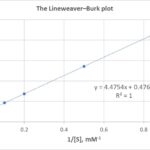A 125cc engine, commonly found in pit bikes and dirt bikes, relies on a correctly wired electrical system for starting and running. Understanding the 125cc Wiring Diagram is crucial for troubleshooting and ensuring your bike operates smoothly. This guide provides a clear overview of the key components and connections within a typical 125cc wiring system.
Key Components of a 125cc Wiring System
Several essential components work together in a 125cc wiring system:
- Battery: Provides the initial power for starting the engine and running the electrical accessories.
- Starter Motor: An electric motor that cranks the engine to initiate combustion.
- Solenoid: A relay that engages the starter motor when activated by the starter button. It receives power directly from the battery via a heavy-gauge (thick) red wire.
- Starter Button: A switch that activates the solenoid, sending power to the starter motor. This button connects to the solenoid via a smaller gauge red wire.
- Kill Switch: A switch that grounds the ignition system, effectively stopping the engine. Typically, a green wire connects the kill switch to the solenoid’s ground terminal. This is often a green/yellow wire coming from the solenoid.
- Ignition System: This includes the CDI (Capacitor Discharge Ignition) unit, coil, and spark plug, responsible for generating the spark that ignites the fuel-air mixture. While not directly part of the starting circuit, disconnecting the CDI during testing can prevent accidental damage.
- Key Switch (Optional): In some models, a key switch controls the power to the ignition and starting circuits. This adds an extra layer of security and prevents unauthorized use. If present, it should be wired in series with the starter button’s red wire to the solenoid. This way the key needs to be on to allow power to flow to the starter button.
- Grounding System: Ensures a complete electrical circuit by providing a return path for the current. The engine and chassis typically serve as the ground, connected to the negative terminal of the battery via a heavy-gauge black or green wire.
Typical 125cc Wiring Connections
- Battery Positive (+): Connects to the positive terminal of the battery. A heavy-gauge red wire runs directly to the solenoid.
- Battery Negative (-): Connects to the negative terminal of the battery and to the engine/chassis ground.
- Solenoid: Has two heavy-gauge terminals for the battery positive and starter motor connections. Additionally, it has smaller gauge wires for the starter button and kill switch.
- Starter Motor: Connected to the solenoid via a heavy-gauge wire.
- Kill Switch: Connects to the ground terminal of the solenoid, usually through a green or green/yellow wire.
Troubleshooting Tips
- Clicking Solenoid: If the solenoid clicks when the starter button is pressed but the engine doesn’t crank, check the connection between the solenoid and the starter motor.
- No Clicking Solenoid: If the solenoid doesn’t click, check the power supply to the solenoid (heavy-gauge red wire from the battery) and the starter button connection. Using a 9V battery can help identify solenoid leads and test its functionality.
- Engine Not Starting: Ensure the bike is in neutral, has adequate grounding, and the kill switch is in the “run” position. A multimeter can be useful for checking continuity and voltage.
Conclusion
Understanding your 125cc wiring diagram is fundamental for maintaining and repairing your pit bike. This guide provides a foundational overview of the key components and connections. Remember to consult your bike’s specific wiring diagram for detailed information and always disconnect the CDI when testing to prevent damage. By understanding these basic principles, you can confidently tackle common electrical issues and keep your bike running smoothly.

